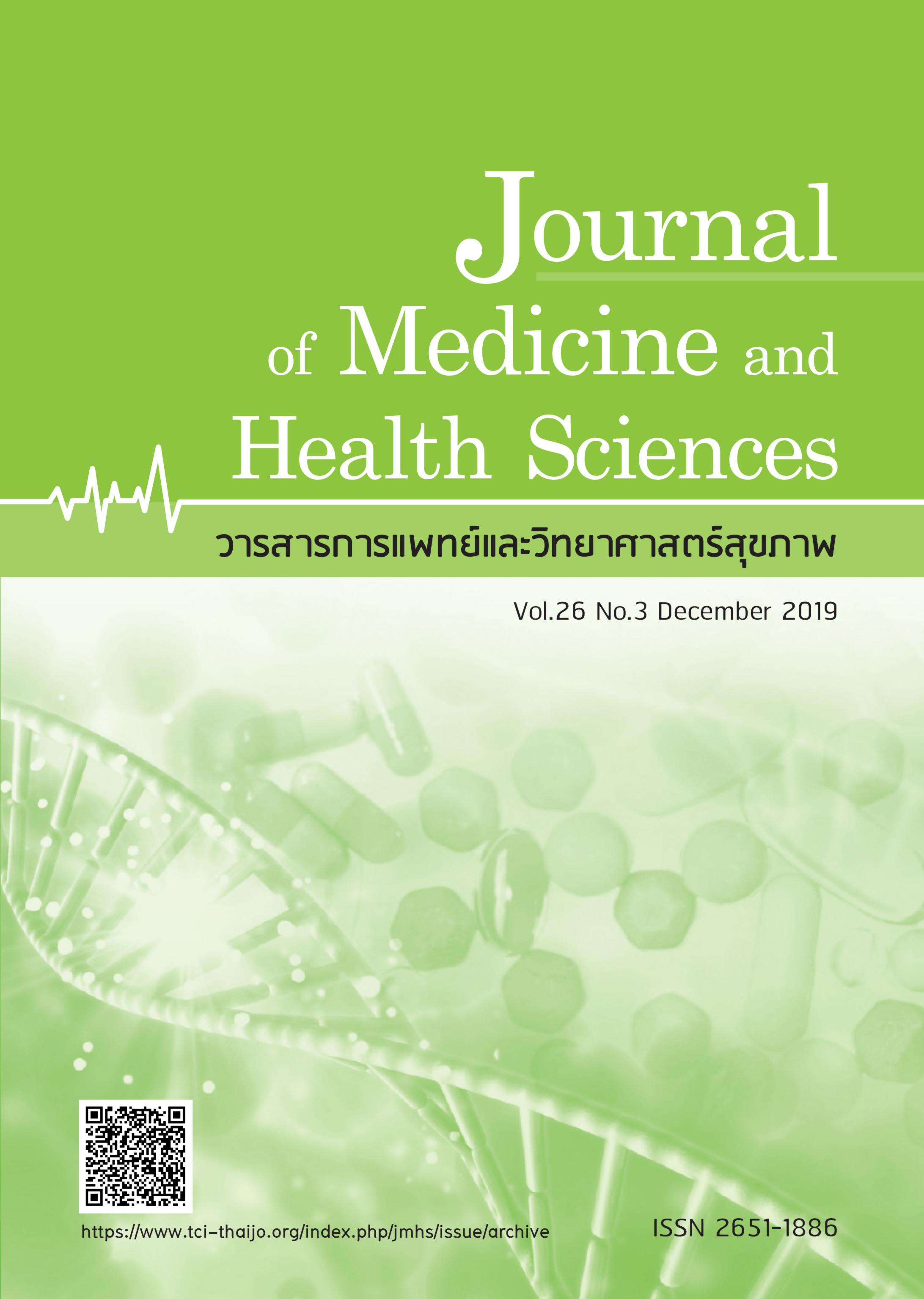The relationship between perceived neighborhood cohesion and stigma surrounding addiction on methamphetamine use of drug addicts in compulsory treatment system in Southern Thailand
Keywords:
perceived neighborhood cohesion, stigma surrounding addiction, methamphetamineAbstract
Abstract
This cross-sectional analytic study aimed to determine relationship between perceived neighborhood cohesion, stigma surrounding addiction and methamphetamine use. All consecutive sampling of 347 subjects among randomized methamphetamine use among drug addicts at compulsory drug detection centers in Southern, Thailand. The face-to-face structured interviews were used for data collection and statistical interpretation by descriptive statistic and Binary logistic regression. The results revealed that the majority of subjects were male (81.3%), age average 26.2 years old, completed more secondary school (51.3%), unemployed (32.6%), had a drug-related criminal history (47.1 %), with family member (57.2%) and friend (57.5%) used drug. While the majority of participants, 70.6 % used methamphetamine and 29.4% used other illicit drugs. The middle and high level of neighborhood cohesion perception was significantly associated with methamphetamine use (aOR=0.50, 95%CI:0.27,0.92; aOR=0.51, 95%CI:0.28,0.95 respectively), It was also found that the middle and high level of stigma surrounding addiction was significantly related with methamphetamine use (aOR=1.87, 95%CI:1.04,3.38; aOR=2.22, 95%CI:1.21,4.07 respectively). This could be concluded that social environmental factors as perceive neighborhood cohesion had an influence on reduced methamphetamine used opportunity and stigma surrounding addiction also had an influence on increased methamphetamine used opportunity. Therefore, the solving problem or intervention as preventive for newer drug abuse and relapse should be considered these factors such as reduce social stigma or promoting neighborhood cohesion and mutual help in community



